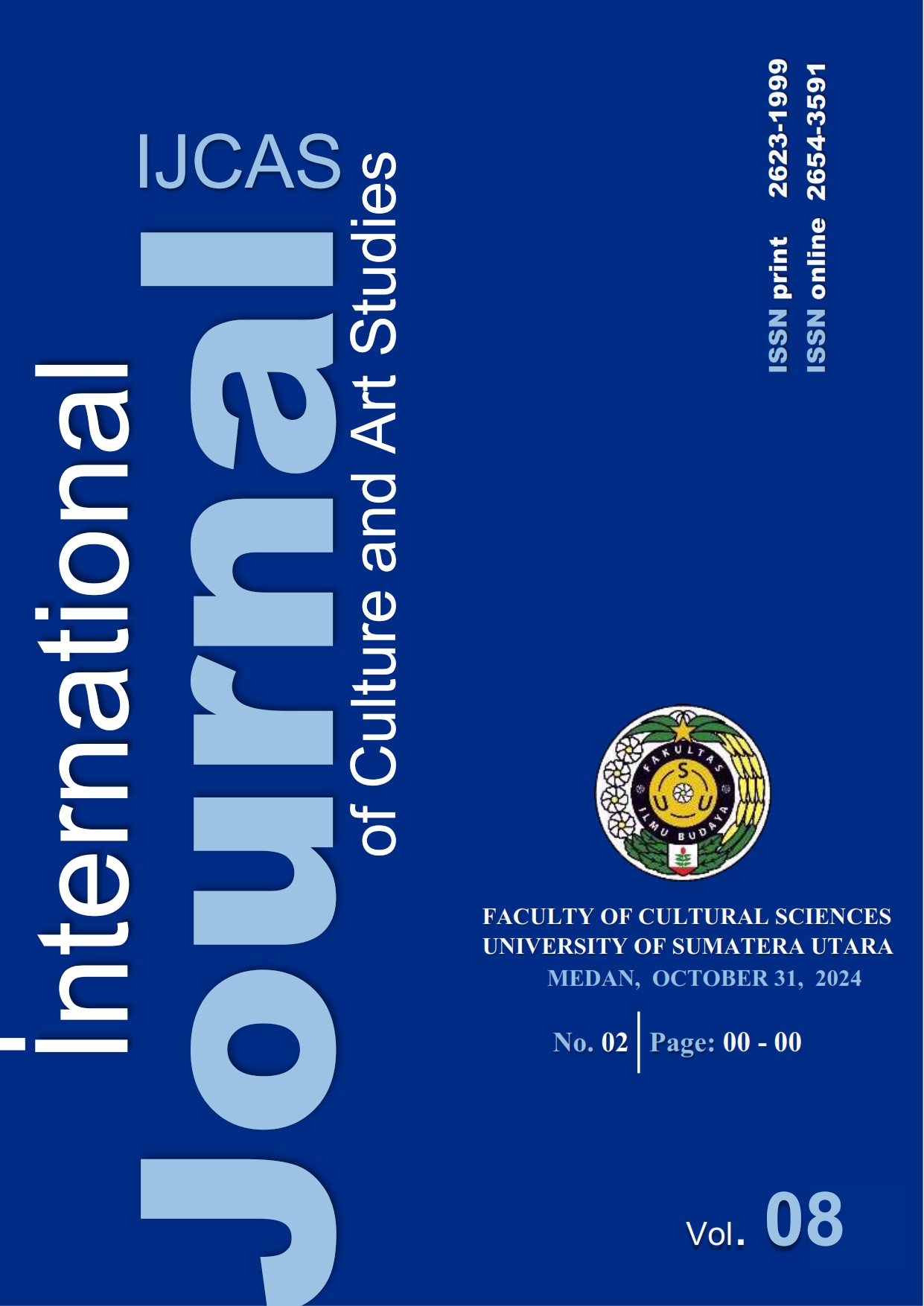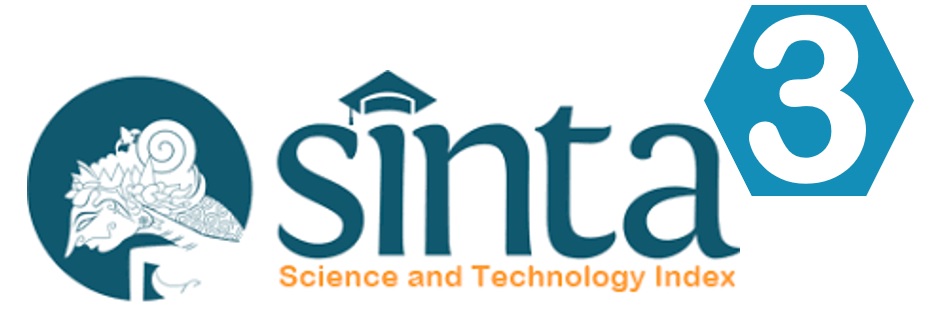Technology-Enhanced Art and Sustainable Discourse Practices
DOI:
https://doi.org/10.32734/ijcas.v8i2.16654Keywords:
Technology-Enhanced Art, Discourse Analysis, Sustainable Discourse Practices, Social Connection,, Cultural Sensitivity, Digital AgeAbstract
This study explored the potential of technology-enhanced art in fostering sustainable discourse practices and social connection in the digital age. As technology advances, new opportunities emerge to integrate digital tools into creative practices, particularly in the realm of art. By examining the intersection of art, technology, and discourse analysis through a sustainability lens, this research aims to uncover innovative approaches to promoting effective communication, civic engagement, collaboration, intercultural understanding, empathy, and resilience incorporating co-design processes, shared decision-making, or collaborative art-making activities. The study provides an overview of technology-enhanced art practices including social media, virtual reality, interactive installations, and digital storytelling tools, and their impact on discourse practices within diverse socio-cultural contexts. It investigates the role of digital platforms and creative processes in facilitating social connection through discourse. The research focuses on a thematic approach to technology-enhanced art interventions that promote sustainable discourse practices and social connection. Through a thematic and intervention-based approach, this research combines a review of current literature with case studies showcasing the successful implementation of technology-enhanced art interventions. So the current study argues that technology-enhanced art holds significant potential for fostering sustainable discourse practices and social connection in the digital age. By harnessing the power of digital tools and creative processes in an environmentally conscious manner, artists, educators, and practitioners can support social connections. This, in turn, contributes to personal, social, and environmental resilience in a rapidly evolving technological landscape.
Downloads
References
Adger, W. N. (2000). Social and ecological resilience: Are they related? Progress in Human Geography, 24(3), 347-364. DOI: 10.1191/030913200701540465
Bonanno, G. A. (2004). Loss, trauma, and human resilience: Have we underestimated the human capacity to thrive after extremely aversive events? American Psychologist, 59(1), 20-28. DOI: 10.1037/0003-066X.59.1.20
Chen, C. (2015). Digital Storytelling with Refugee Youth: A Tool for Promoting Literacy and Youth Empowerment And a Catalyst for Social Action. Master's Capstone Projects. 34. Retrieved from https://scholarworks.umass.edu/cie_capstones/34
https://core.ac.uk/download/pdf/32444908.pdf
Coholic, D. (2011). Exploring the feasibility and benefits of arts-based mindfulness-based practices with young people in need: Aiming to improve aspects of self-awareness and resilience. Child & Youth Care Forum, 40(4), 303-317. DOI: 10.1007/s10566-010-9139-x
Couldry, N., & Powell, A. (2014). Big data from the bottom up: Participatory (sensor) media and community-based data accountability. Big Data & Society, 1(2), 1-13. DOI: 10.1177/2053951714539277
Farr, W., Yuill, N., & Raffle, H. (2010). Social benefits of a tangible user interface for children with autism spectrum conditions. Autism, 14(3), 237-252. DOI: 10.1177/1362361309353613
Gabrys, J. (2014). Programming environments: environmentality and citizen sensing in the smart city. Environment and Planning D: Society and Space, 32(1), 30-48. DOI: 10.1068/d16812 https://research.gold.ac.uk/id/eprint/5641/1/Gabrys_SmartCity_EPDOnline.pdf
Ginsburg, F. D. (2008). Rethinking the digital age. In J. K. Aslop & J. M. O’Regan (Eds.), The Handbook of Media and Culture in the Digital Age (pp. 377-394). Wiley-Blackwell.
Gray, S., Bevan, C., Cater, K., Gildersleve, J., Garland, C., & Langdon, O. (2021). Developing arts-based methods for exploring virtual reality technologies: A university–industry case study. Research for All, 5(2), 246–270. https://doi.org/10.14324/RFA.05.2.05
Gubrium, A., Hill, A. L., & Flicker, S. (2014). A situated practice of ethics for participatory visual and digital methods in public health research and practice: A focus on digital storytelling. Global Health Promotion, 21(2), 28-35. https://doi.org/10.1177/1757975914528721
Holling, C. S. (1973). Resilience and stability of ecological systems. Annual Review of Ecology and Systematics, 4, 1-23. DOI: 10.1146/annurev.es.04.110173.000245
Ismail, S., Azizan, S. N., & Wahab, M. H. A. (2021). Digital storytelling: Enhancing communication skills for children with autism spectrum disorder. Journal of Education and Learning, 10(5), 1-10. DOI: 10.5539/jel.v10n5p1
Kaimal, G., & Ray, K. (2017). Free art-making in an art therapy open studio: Changes in affect and self-efficacy. Arts & Health, 9(2), 154-166. DOI: 10.1080/17533015.2016.1217248
Hawkins, H. (2014). For creative geographies: Geography, visual arts, and the making of worlds. Routledge.
Lambert, J. (2013). Digital storytelling: Capturing lives, creating community (4th ed.). Routledge.
Leavy, P. (2017). Research design: Quantitative, qualitative, mixed methods, arts-based, and community-based participatory research approaches. Guilford Press.
Miles, M. (2014). Eco-aesthetics: art, literature and architecture in a period of climate change. London: Bloomsbury.
Risam, R. (2018). New Digital Worlds: Postcolonial Digital Humanities in Theory, Praxis, and Pedagogy. Northwestern University Press.
Vyas, B. (2022). Ethical implications of generative AI in art and the media. International Journal for Multidisciplinary Research, 4(4), 1-11. https://www.researchgate.net/publication/376717725_Ethical_Implications_of_Generative_AI_in_Art_and_the_Media
Downloads
Published
How to Cite
Issue
Section
License
Copyright (c) 2024 Parisa Zaeri, Zahra Sadat Roozafzai

This work is licensed under a Creative Commons Attribution-ShareAlike 4.0 International License.













